My, What A Lot Of Service Dogs There Are!
‘Sup Super Cool Peoples of the Internet!
I’m writing this with the understanding that you have read my last post. If you aren’t or don’t, I would suggest going to read that first.
All caught up? Good!
Let’s talk about the different types of service dogs.
Don’t worry–I’m still planning on answering your questions as to What kind of SD are you getting? What is your SD going to do? Why do you even need an SD–isn’t that just being lazy? (Hint: the answer to that last one is ABSOLUTELY NOT!) Those answers are coming–I promise you. I know it may seem like we’re taking things slowly, but this information will help later. It’ll also help my answer make sense.
One little caveat before we start: under the ADA, these labels that I’m about to use don’t exist. In the eyes of the law, a service dog is a service dog. End of story.
Why are these labels used, then? Pretty much, so that people understand better what the dog is trained to do.
Additionally, these labels aren’t hard-and-fast rules. People may use titles other than those that follow, and sometimes they mash them together. One more thing. There are tons of “types” of service dogs, and I simply cannot cover them all. What I’m about to give you is a list of the most common types.
A second little caveat. There are dogs in this list that use special equipment. Just because it isn’t wearing the gear for that group doesn’t mean it’s not in that group. Just like service dogs in general are still service dogs even if they’re not wearing a vest.
Well, with that in mind, here we go!
Autism assistance/response dogs. Autism assistance dogs assist in helping their person stay calm and grounded in strange/overwhelming/different situations and settings. They do this via tactile and/or deep pressure stimulation. These dogs also help with, or take on, the responsibility of maintaining boundaries.
Autism assistance dogs don’t have special distinguishing gear. If the handler is young and non-verbal, they generally carry contact information and emergency protocol. This is normally in a pocket of the usual SD vest. Sensory disorder dogs do the same tasks as autism assistance dogs and are usually lumped in with them.

Diabetic alert dogs (DADs). Diabetic alert dogs alert their humans to (potentially) dangerous/deadly blood sugar highs and/or lows. A lot of these dogs are also diabetic response dogs and help their people remedy their blood sugar. Some dogs bring their humans a juice box, for example. Many Diabetic alert dogs are also trained to call 911 on a K-9 alert phone. This is in case things get disastrous and their human is unable to help themselves by doing it.
Usually diabetic alert dogs don’t wear any special gear. They normally carry emergency protocols like Autism assistance dogs, however. This is preparation for moment that they are the first point of contact for emergency medical personnel.
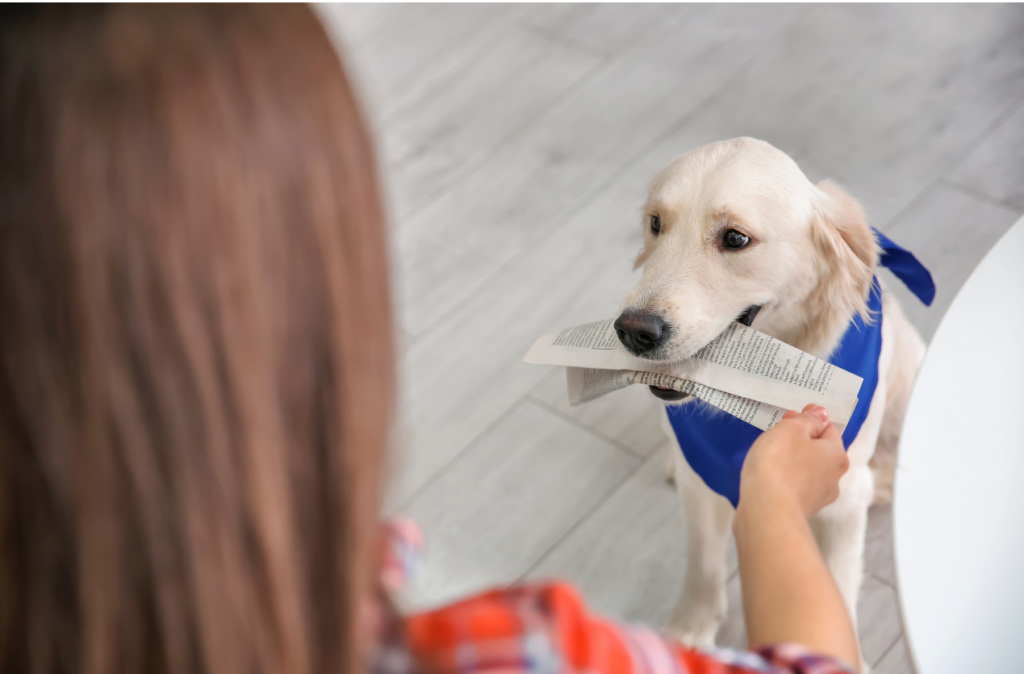
Brace/mobility support dogs (BMSD). Bracing dogs work to provide (counter)balancing or bracing for a handler who has balance difficulties. These dogs are also often trained to fetch things, open/close doors, turn lights on and off, and other such things. Basically, they take on the tasks that could cause their handler trouble in everyday life as well as emergencies.
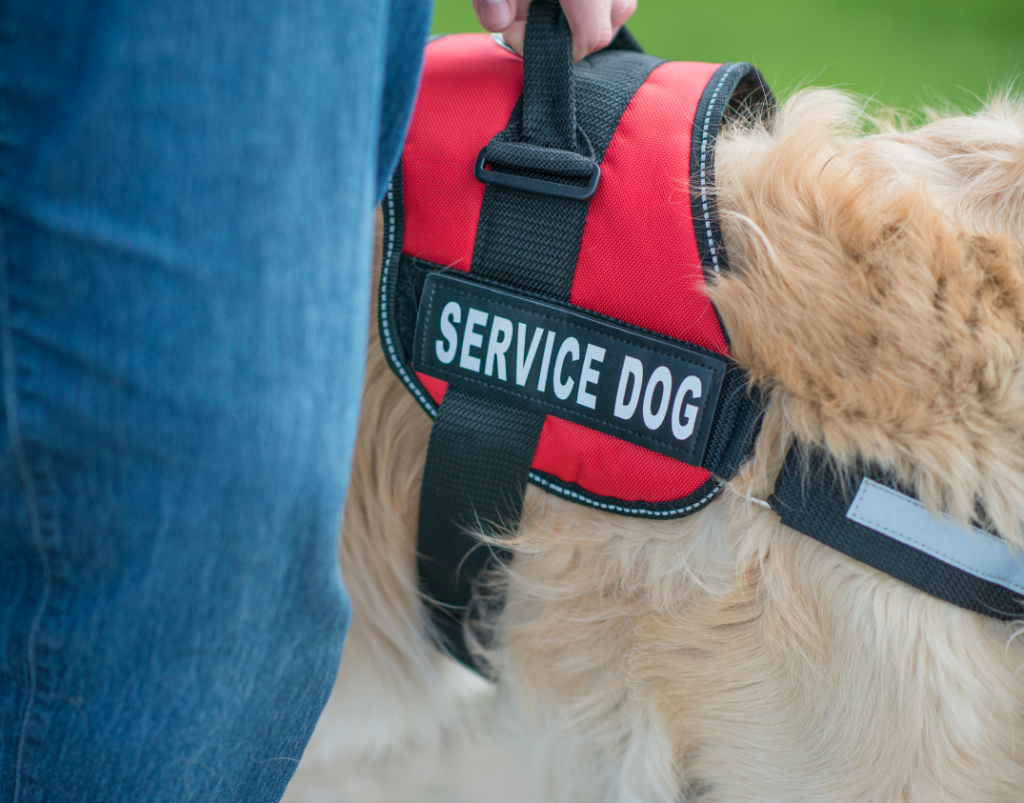
These dogs sometimes wear a custom harness to help them safely assist their human. A necessity for mobility dogs is that they’re strong enough that supporting their partner is safe for dog and human. Usually, these dogs are at least 23″ tall, and 55 pounds. Obviously, if the person is taller or bulkier, they’ll be bigger. As a general rule, though, chihuahuas and anything miniature will NOT be mobility support dogs.
Wheelchair assistance dogs. You can think of these as brace support dog² or mobility support dog 2.0–the next generation! In layman’s terms, you basically take a brace dog, and go to the next step. Wheelchair assistance dogs do a lot of what mobility support dogs do: opening/closing doors, retrieving phones, keys, the remote, etc. And turning lights on and off. On top of that, though, they also help their handlers with transferring from wheelchair to wheelchair, and sometimes even pulling it.
NOTE. Just because someone is ambulatory some of the time doesn’t mean they’re DQ’ed from having this kind of service dog.
These dogs don’t have any special gear required. However, they’ll often wear a special harness to assist them in pulling the chair or opening the door.
Severe allergy alert dogs (AADs): Wheelchair assistance dogs are a step above mobility support. Likewise, allergy alert dogs are basically a step down from diabetes alert dogs. Allergy alert dogs alert their people to severe allergies that may be in the area. Some of the most common allergens these dogs are on alert for are shellfish, tree nuts, and gluten.
Usually allergy alert dogs wear vests with pockets for emergency contacts, medical info, and/or medication. These dogs also have a patch on their vests that says IN EVENT OF EMERGENCY CHECK POCKETS. This is to ensure speedy, safe, and accurate medical care.
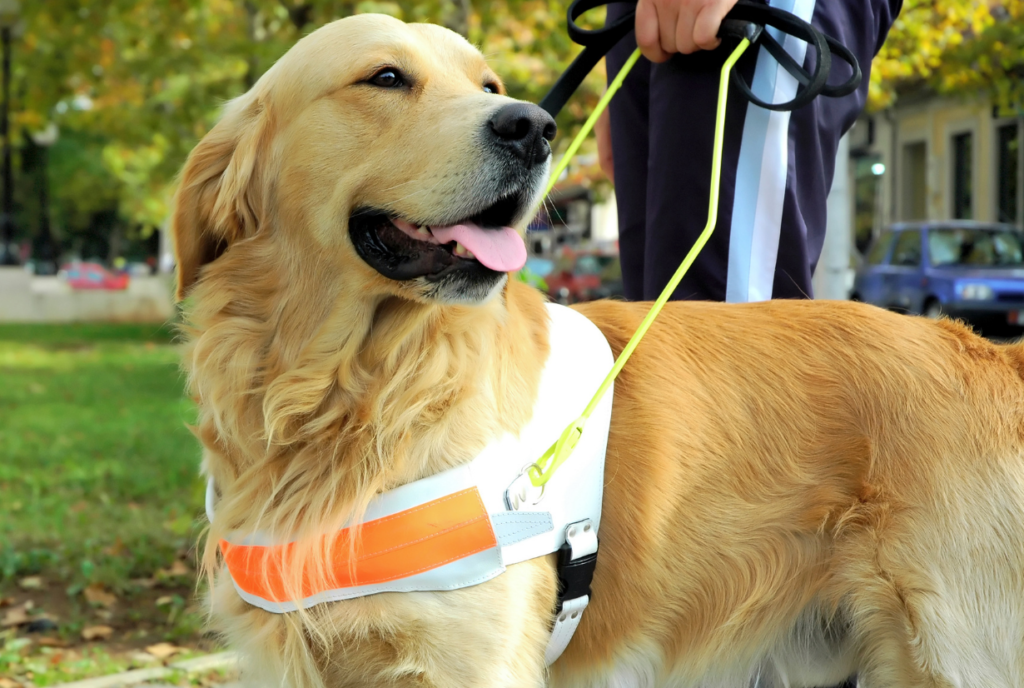
Visual assistance dogs/guide dogs/leader dogs/seeing eye dogs. We all knew this was coming, right? Raise your virtual hands if these are the first dogs you think of when you hear the term “service dog”. Don’t be shy; mine’s up in the air, too. There’s a good reason this is the case. These dogs guide their visually impaired, blind, or Blind handler. (Yes, there’s a difference. I suggest you look it up; it’s really interesting. I’m not going to go into it here, however, as that’s not what we’re talking about.)
These dogs wear a guide dog harness. This harness is similar to those a mobility dog will wear. A guide dog’s handle is normally longer and more solid. At least part of this harness will be white. White is a color reserved for guide dogs; no other dog can wear it.
Hearing dogs. These dogs work in the same vein as guide/visual assistance/leader/seeing eye dogs, though they don’t do the same thing. Obviously. Much like guide dogs, hearing dogs alert their humans to outside stimuli that they may otherwise miss. While with guide dogs it may be a car that’s coming, hearing dogs alert to phones ringing, doorbells, alarms, etc.
Hearing dogs don’t require special gear, but, bright orange is to hearing dogs as white is to leader dogs.
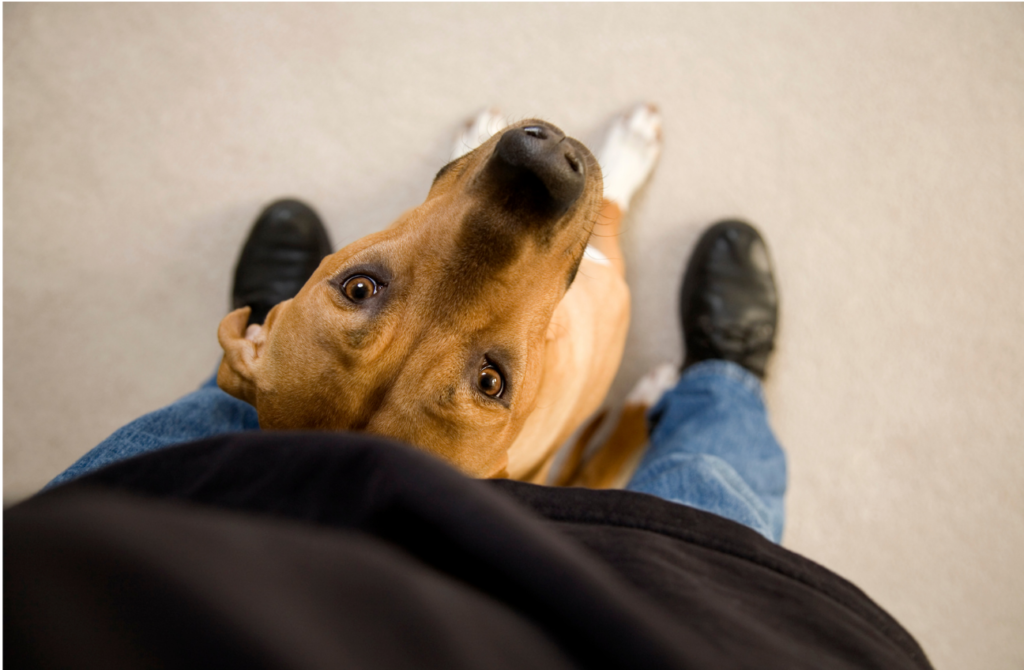
Psychiatric service dog (PSDs). Often psychiatric service dogs are linked to people with post traumatic stress disorder. There’s nothing wrong with this, but it’s like limiting service dogs in general to guide dogs. There’s just so much more to them than that. These dogs assist any handler with a diagnosable (!!!) psychiatric situation. These are things such as anxiety, depression, or–like I said above–PTSD.
This definition may seem like an emotional support dog. THEY ARE NOT THE SAME. These dogs are trained to help their handler with specific tasks. Much like an autism assistance dog, they also provide grounding in the here and now.
These dogs don’t have any special gear.
Seizure response dogs. Yeah, now you’re all sitting up a bit straighter, aren’t you? Yes, this is the base kind of service dog that I’m getting. These dogs respond to their human’s seizures with trained tasks. These tasks can be something like getting someone for help. They can also learn to position themselves as a ‘pillow’ so their human’s head isn’t hitting the ground. They can also retrieve medication or use deep pressure stimulation to revive the person. Others are trained to–like diabetes alert dogs–dial 911 on a K-9 phone. Depending on the type and frequency of the seizure, they may be trained to do something else entirely.
These dogs don’t usually have any special gear.
Medical alert dogs (MADs). These dogs alert their handler to dangerous changes of verifiable, measurable symptoms. So, for those of you who had to reread that a few times, here’s another definition. Say someone’s hormone levels or blood sugar is changing to a dangerous point. A medical alert dog is trained to alert their handler to this.
A medical alert dog may or may not have any specific, special gear.
Medical assistance/response dog. This is basically the catch-all category. If an service dog’s designation isn’t easily assigned or explained, they’ll usually fall into this category. If someone says their dog is a medical assistance dog, I’d suggest just leaving it at that. This either means that it’s complicated, or that they don’t want to talk about it.
Whoo! So, since I’ve learned my lesson when I tried to lump three different posts into one and WordPress didn’t save it, I’m going to end here. Next time we’ll cover what my service dog will do, what categories it could fall into, and a few other fun, random tidbits about service dogs.
If you want to be kept up to date on when posts come out, sign up for our email list below!
Have a good day, all!
Lauryn
[ctct form=”2567″ show_title=”false”]

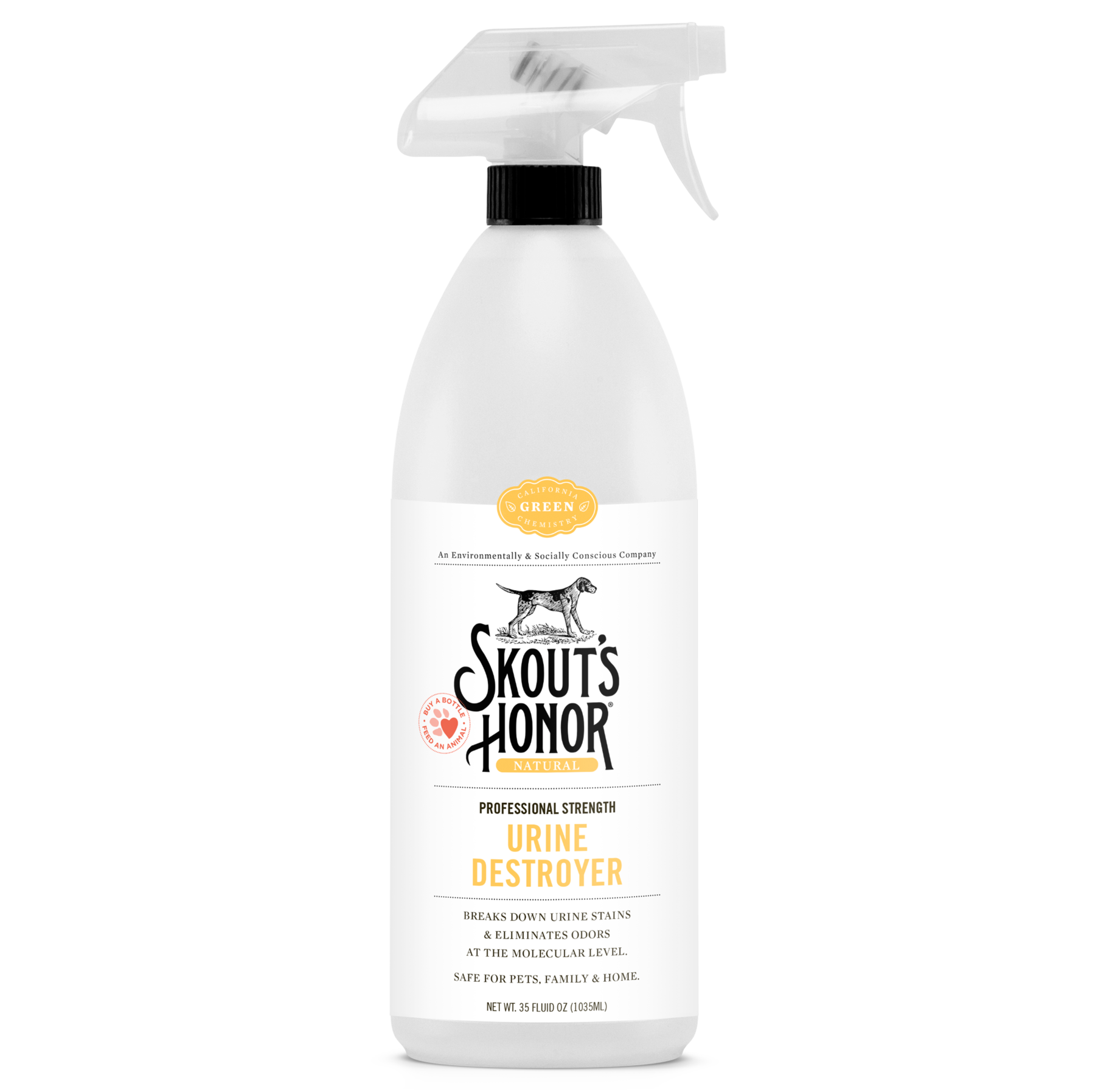
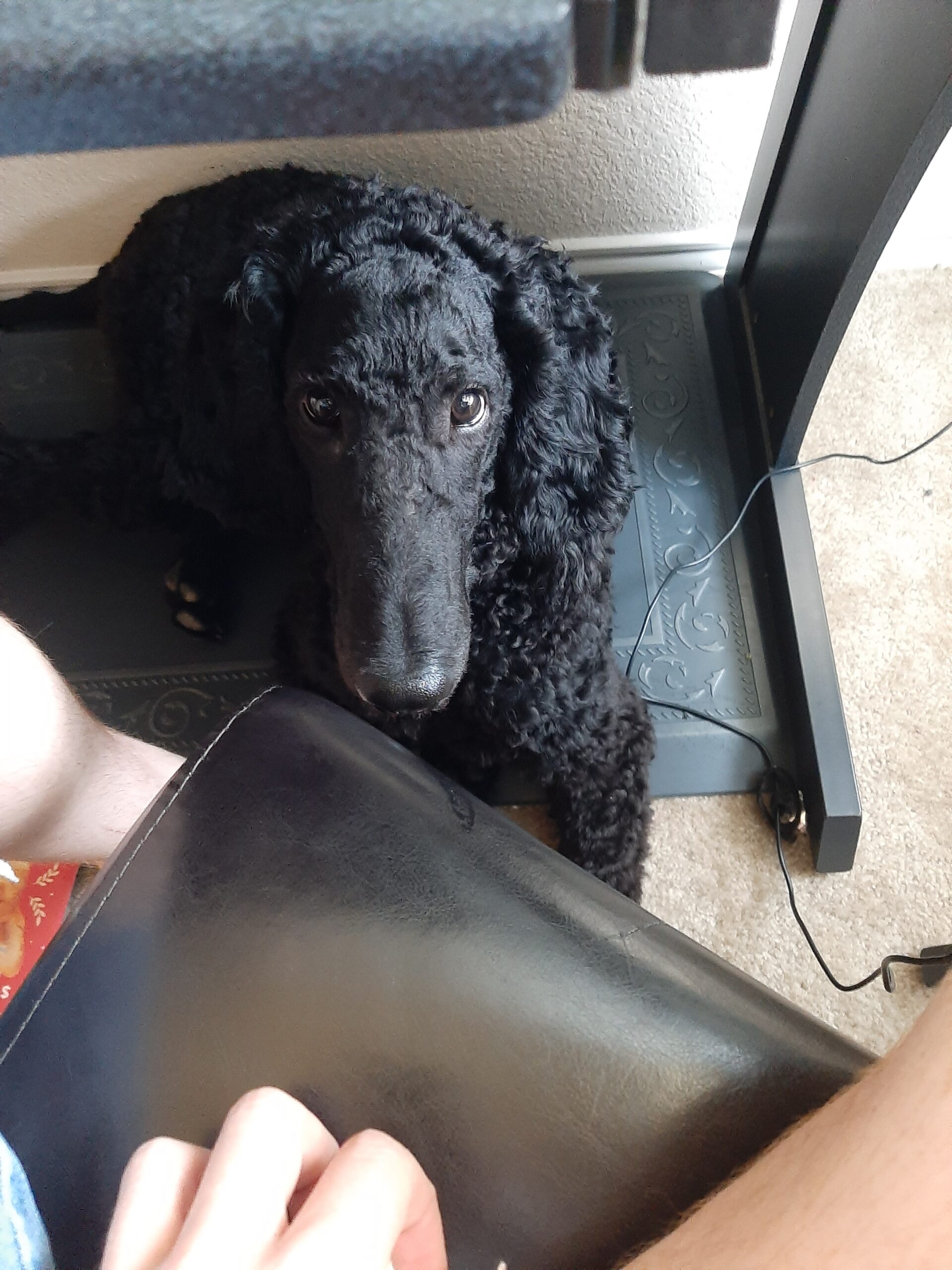
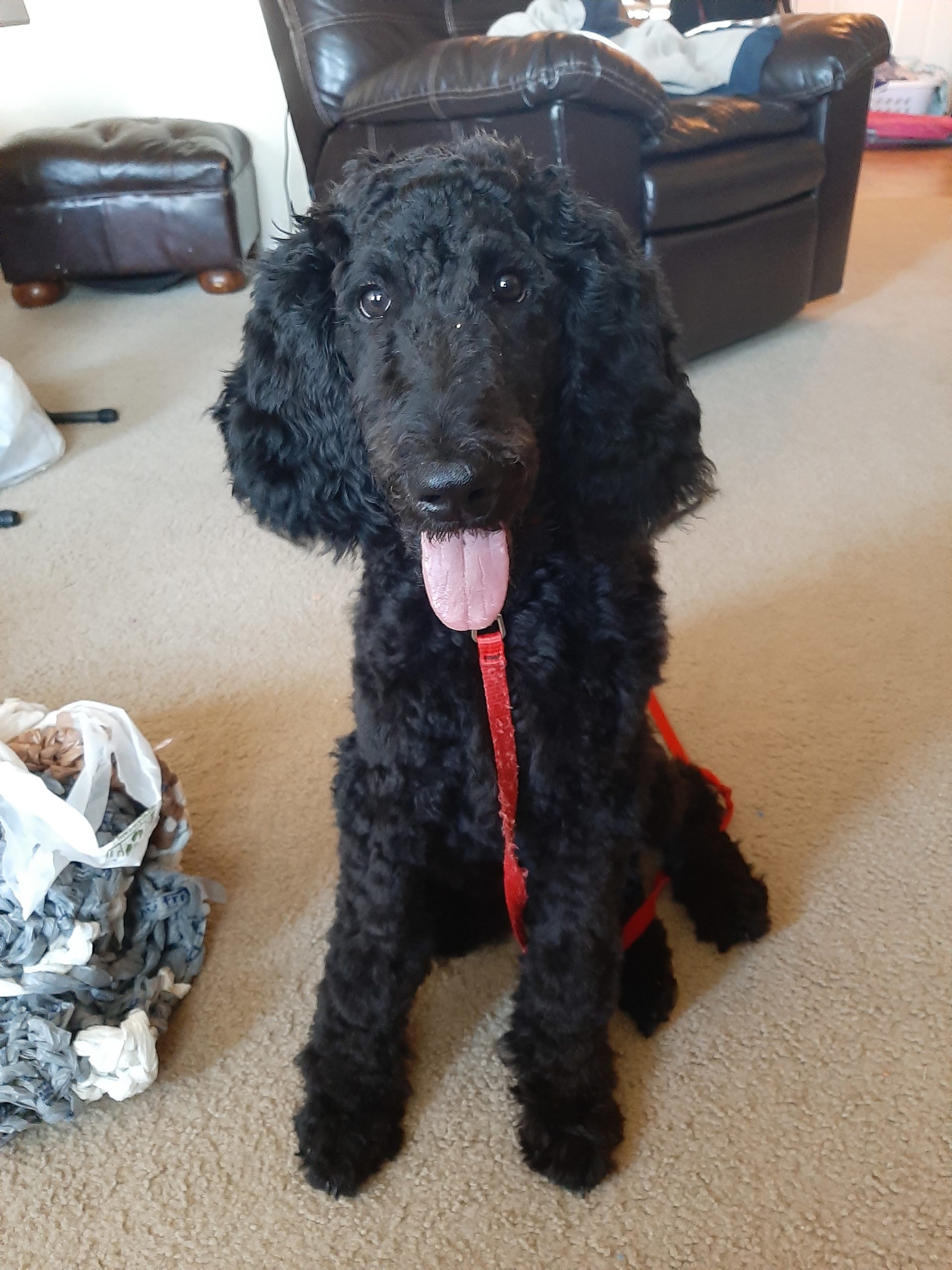
Trackbacks & Pingbacks
[…] I’m sure many of you know, I am training Cor to be a seizure response dog. As I explained in My, What a Lot of Types [of Service Dogs] There Are! that’s different from a seizure alert dog (which, in the previous post, falls under the MAD […]
[…] as well as many of the different jobs SDs can have (https://servicedogstory.com/my-how-many-types-of-service-dogs-there-are/), and why I’m getting an SD (https://servicedogstory.com/why-a-service-dog/). I would highly […]
[…] recap. Ah-he-he-hem… go read A Service Dog Is A Service Dog Is A… Therapy Dog? and My, What A Lot of Types [of Service Dogs] There Are! There! Quick, effective, and relatively […]
Leave a Reply
Want to join the discussion?Feel free to contribute!